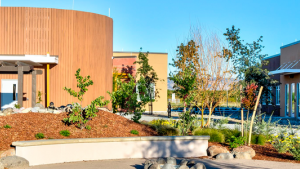Flooding from heavy downpours is a great risk to medical facilities: in 2001, downtown Houston, Texas, faced an historic 1,000-year flood as a result of Tropical Storm Allison. Though the city is more than 80 miles inland, Allison hovered over the region for days, dumping more than three feet of rain on the Houston metro area. Allison left 22 dead and caused almost $5 billion in damage to Harris County alone.
The flooding caused by Allison virtually shut down the 700-acre Texas Medical Center complex, the largest aggregated medical campus in the United States. Flood waters crippled the infrastructure of the Center, which at the time included 13 hospitals, two specialty institutions, two medical schools, four nursing schools, and other schools for various health-related professions. The Center’s emergency generators, electrical switchgear, and boiler and chiller plants all sustained water damage. Worse still, about 30,000 research animals housed in the basement of Baylor College of Medicine drowned. Altogether, the loss of lab animals, computer data, records, and tissue samples meant that medical researchers saw years of their work destroyed.
Planning ahead and engaging others
In the aftermath of the flooding, the Texas Medical Center organization, which acts as a sort of “city government” for the institutions that make up Texas Medical Center, realized that the Center’s infrastructure needed a major overhaul in order to withstand future floods. As a result, all of the Center’s institutions relocated their critical infrastructure and program areas above projected flood elevations, a process that took years to complete.
To accompany this infrastructure upgrade, the Texas Medical Center organization also developed a long-term hazard mitigation plan. The plan incorporates 42 proactive, sustainable design measures to reduce the impact of future extreme weather events. In designing this plan, Texas Medical Center consulted with hydrology experts, officials from the city of Houston, the Federal Emergency Management Agency (FEMA), the Harris County Flood Control District, the Harris County Subsidence District, Reliant Energy, Southwestern Bell, and others. To be effective, the organization realized their update would require the engagement of a broad range of stakeholders.
Powering resilience
After Allison, many systems were non-operational: electrical power; emergency electrical power; heating, ventilation, and air conditioning (HVAC); laboratory and fume hood exhaust systems; domestic cold and hot water; compressed air and vacuum systems; fire detection and suppression systems; and basement sanitary and storm sewer systems all failed. Such systemic failure was possible because the interconnected basements linking the Center’s more than 100 buildings contained vital systems, such as the incoming service from Houston Light and Power (5kV), as well as several unit substations. Motor control centers, distribution panels, and transformers had also been installed in basements, where they were extremely vulnerable to flooding. Although many of the basement tunnels had been equipped with flood control devices after a storm in the 1960s, no one remembered that the devices existed, given the time that had elapsed between events.
Now, a new 48-megawatt combined heat and power utility plant (managed by an independent medical campus power company) has been installed above anticipated flood elevation on the central campus. The plant eliminates dependence on the Houston utility grid for power during both normal and emergency operations, and reduces carbon emissions by bringing electrical generation on-site.
Reducing subsidence
Subsidence, or the sinking of land, can occur when more water is withdrawn from the ground than is replaced through absorption of rainwater. Since 1976, the Texas Medical Center has subsided more than three and a half feet. To keep the new buildings at elevations high enough to be safe from future flooding, architects and planners had to take this process into account. The Center installed a solar-powered system to monitor the subsidence of land in the area.
The extent of impermeable surfaces such as streets and parking lots is one factor that can prevent water from being absorbed back into the ground. Restoring or improving an area’s ability to absorb water may reduce subsidence. Thus, Texas Medical Center has implemented a stormwater management plan that increases green space and improves water absorption through advanced landscaping techniques and permeable paving systems. Every new development on campus, as well as improvement projects that involve streets and sidewalks, now follow stormwater management guidelines. Designs based on these guidelines can improve absorption by integrating landscape features and water drainage across the campus.
How TMC handled Hurricane Harvey
In August 2017, Hurricane Harvey dumped more than 51 inches of rain on the Houston area. Thanks to lessons learned from Tropical Storm Allison, Texas Medical Center's sophisticated floodgate network and other improvements helped protect the world’s largest medical city. In redesigning the Center for resilience, managers worked to make resilience a part of their culture. In addition to preparing infrastructure to withstand the storm, they promoted a culture of resilience among staff members, took advantage of technological advancements to improve communication, trained staff to be prepared for a disaster, and coordinated patient care with other Houston-area providers.


